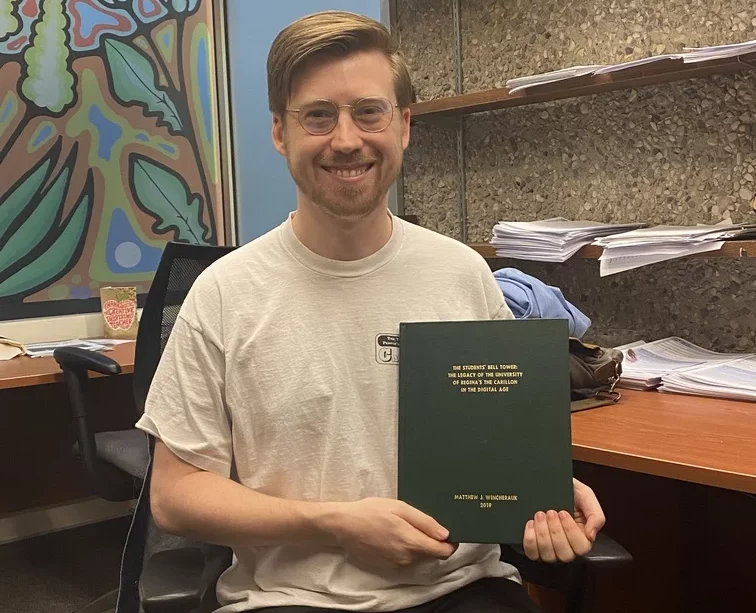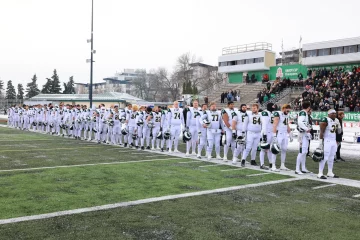Previous EIC turned sessional instructor details the significance of the Carillon
Amidst the looming threat of death for print media, the Carillon has stood strong for over 60 years, serving the University of Regina’s (UofR) student and faculty body. In order to make the case that this student-run newspaper remains significant to campus life, the Carillon borrows Matthew Wincherauk’s insight. From the fall of 2015 until the winter of 2017, Wincherauk worked as the Editor-in-Chief (EIC) of the Carillon and is currently a sessional lecturer in the university’s English department, teaching ENGL100 and ENGL110. This article will explore the significance of the Carillon through conversation with Wincherauk and will reference from his M.A. thesis, The Students’ Bell Tower: The Legacy of the University of Regina’s The Carillon in the Digital Age.
Who benefits from the newspaper?
If you are a UofR student, faculty member, or a resident of Regina, the Carillon offers itself to you as a well of information about what’s happening inside and outside the campus walls. It reports on topics including the latest happenings with the University of Regina Student’s Union (URSU), tuition increases, campus construction, interviews with UofR professors, student artists, local events, and more. Additionally, readers outside of the organization are encouraged to contribute to the newspaper and receive an honorarium in return for their work. Current UofR students, alumni, and faculty members can submit their writing for the news, arts & sports, or op-ed sections, as well as original photography, art, poetry, or comics.
Wincherauk stresses that the newspaper serves an important public role because of its ability to publish content that other outlets might miss. “We do have several newspapers that serve the broader Regina public, […but it] is much harder to get at individual student needs like what’s happening on campus,” he said. “As a student newspaper, we have a responsibility to get that information […] because we serve such a niche public that needs to be aware of this information.”
In his thesis, he states that a university newspaper is in a position of being able to relate to its key publics because it is run by students who are a part of the greater campus community. Therefore, campus newspapers have the ability to reserve its attention for stories of personal interest about the people it serves. We also have special access to resources such as university operations, faculty, and other attending students that newspapers outside the university might have limited access to.
The digital world
An argument can be made that physically printed newspapers are no longer needed in a time when our smartphones can deliver the latest information to us through a single scroll on social media. Wincherauk’s thesis explores the benefits of newspapers being digitalized but also argues for the significance of the material aspects of a newspaper. He argues that hybridity is necessary to increase and maintain readership and engagement but a complete digital transformation will rid the newspaper of its responsibility and the rich history tied to the campus itself. Wincherauk expands on this point by telling the Carillon that a balance between the digital and print is the best thing it can do during this digital age for its survivability.
“I’ve really appreciated [the reels]. I still try to pick up the Carillon every new issue but if I’m just running to class, it’s nice to have those things,” he stated. Still, the physicality of the newspaper is something that we cannot depart from. “I think it is of the utmost importance to maintain that physical space. If you don’t, then you are losing the public that you are trying to serve. You have to be in the physical space and know the physical space to serve that physical public.”
Wincherauk recalls when his team on the Carillon experimented with social media and, through their trials, learned how quickly the algorithm moves on. “Your link, story, or tweet is going to stay up for a split second before it’s gone forever,” he declared. “If it doesn’t get immediate traction, it’s never going to make any kind of impact.”
It’s a testament to the Carillon team that [they] continue to push forward knowing that it would probably be a lot easier, simpler, [and cheaper to go] exclusively digital.” -Matthew Wincherauk
The Carillon’s rebellious roots
The name of our newspaper was born out of UofR’s failure to see through construction of a 160-foot bell tower on the academic green. Despite the tower’s lack of existence, it still serves to be symbolic of the newspaper and its students being in the forefront of demanding accountability where it matters and its dedication to shed light on campus-focused issues. For Wincherauk, the fact that the Carillon is still available in print is owed to its rebellious and radical roots. “All doomers have been signalling the death of print media for decades now,” he affirmed. “It’s a testament to the Carillon team that [they] continue to push forward knowing that it would probably be a lot easier, simpler, [and cheaper to go] exclusively digital.”
Wincherauk says that if the Carillon were to disappear, representation would also be lost. “The interesting people, things, and events happening on campus that deserve recognition are more or less going to be gone,” he claimed. “You would especially miss the fact that students are not going to have the same access to information coming from people that are literally them- students reporting on students.”
He fondly looks back at his team’s intensive coverage of the leaks around the university’s infrastructure, drawing enough attention for the university to fix it. “That is a literal and physical thing wrong with our campus, so it requires a physical media source,” he stated. “It literally affects students in a physical and real way and it’s worthwhile covering.” The legacy of the Carillon’s past lives on through Wincherauk as a current UofR sessional instructor. In the classroom, he finds himself using the Carillon as an example for writing an effective hook. Looking back at his time on the newspaper as a sports writer turned EIC, he knows how valuable having access to the faculty administration is when reporting about campus life and hopes to be an accessible resource for the Carillon going forward. In his parting words, he said, “it’s hard being a student newspaper and [the Carillon] is succeeding in spite of how stupidly difficult and frustrating it can be.”










